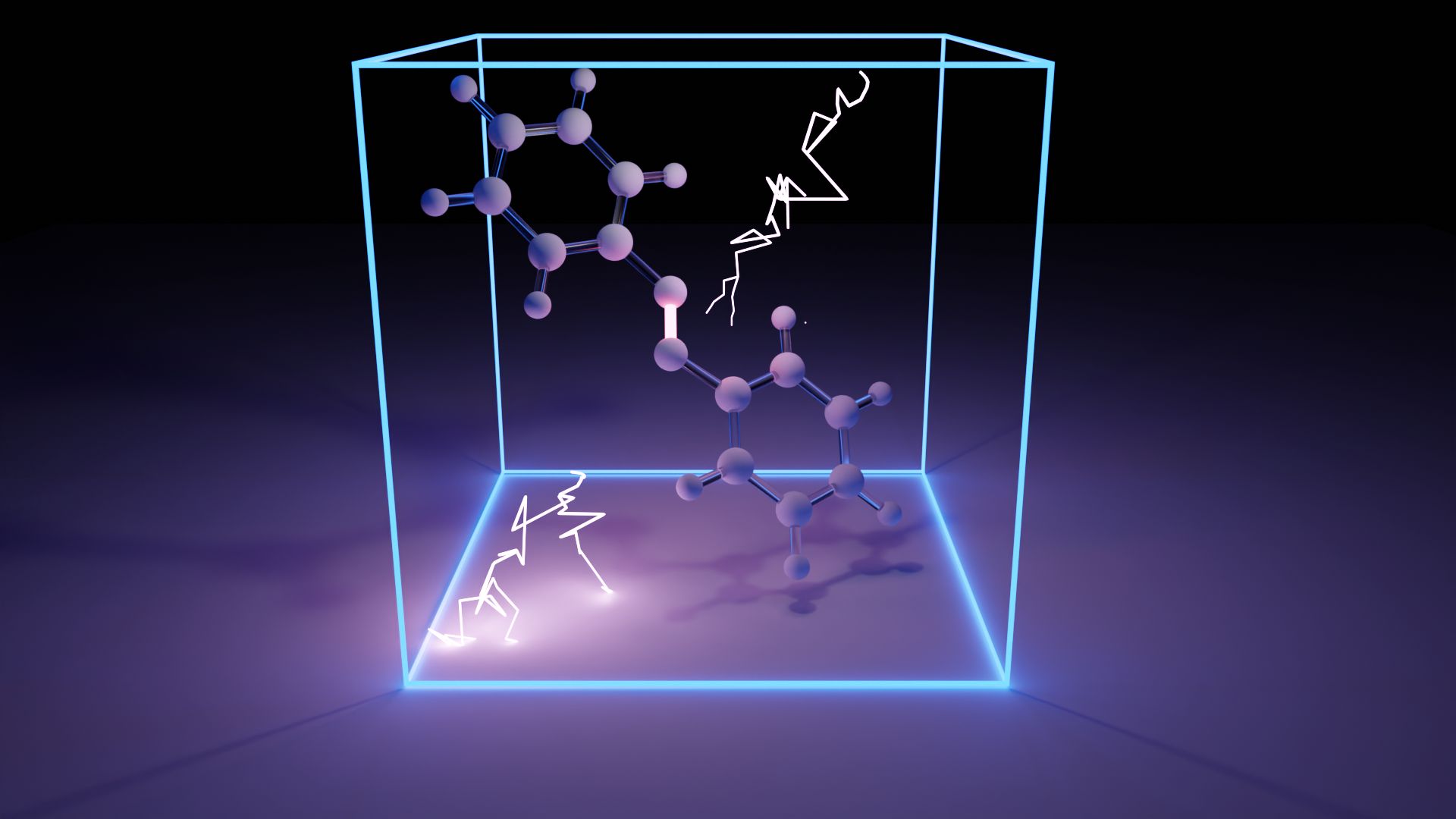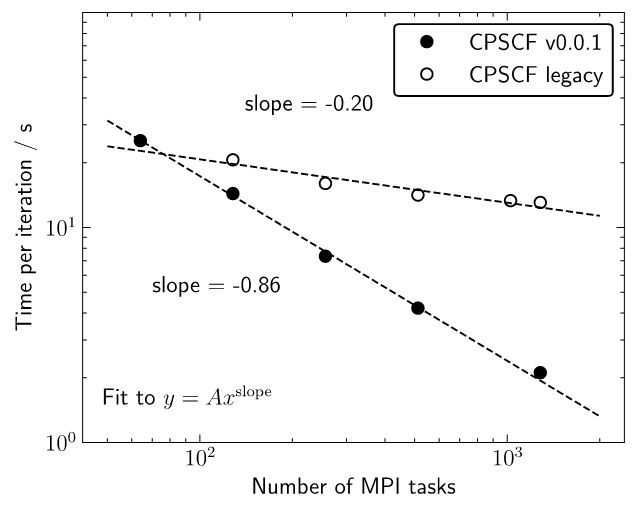Achieving the sustainability and scalability of numeric-atomic-orbital-based linear response and electron-phonon functionality in FHI-aims
ARCHER2-eCSE01-16
PI: Dr Reinhard Maurer (University of Warwick)
Co-I(s): Dr Andrew Logsdail (Cardiff University), Dr Volker Blum (Duke University), Dr Mariana Rossi (Max Planck Institute for the Structure and Dynamics of Matter), Dr Christian Carbogno (Fritz-Haber-Institut der Max-Planck-Gesellschaft)
Technical staff: Dr Christopher S Brady (University of Warwick), Mr Connor Box (University of Warwick)
Subject Area:


Figure 1 Comparison of total time per CPSCF iteration for legacy code and new interface (v0.0.1) for electric field response of bulk Si with 128 atoms on ARCHER2. In the legacy code, the ScaLAPACK implementation was not functioning on ARCHER2, this was fixed in the new interface as a result of this work
The electronic structure software FHI-aims has a unique local-orbital-based real-space implementation of linear response, based on a coupled perturbed self-consistent field implementation of density functional perturbation theory (DFPT). This code has the ability to predict thermal and electrical response properties of materials. The original implementation of this code featured heavy code duplication of the linear response calculation sequence which created a challenge for future code maintenance and development. As part of this project, the code has been simplified and duplication was reduced. About 10 different implementations of coupled-perturbed self-consistency field (CPSCF) have now been merged into a common shared DFPT module, reducing code lines by over 60 % whilst providing more functionality. Lower-level routines that share a common purpose have been collected and merged to guide future developers. New modules for the calculation of specific response properties have been created. Overall, the refactored DFPT code is more modular, intuitive, scalable and user and developer friendly. The DFPT module can handle the calculation of polarizability, dielectric constants, infra-red (IR) spectra, phonon band structures, electron-phonon coupling, electronic friction, and soon random-phase approximation (RPA) forces. This has a range of benefits for the materials science community and computational chemistry community. For example, the calculation of electron-phonon coupling allows the study of vibrational lifetimes and hot-electron effects, which are of interest for energy transport in materials and the study of ultrafast chemical dynamics. The improvements to the electronic friction driver code were recently described in a manuscript preprint. (arXiv:2112.00121)
Information about the code
- The homepage of FHI-aims:
- Information for obtaining FHI-aims:
- The source code for FHI-aims is available on GitLab:
- Specific compilation instructions for ARCHER2:
Help (both general and functionality specific, including this functionality) is available on the FHI-aims Slack channel, which is available to registered users.
